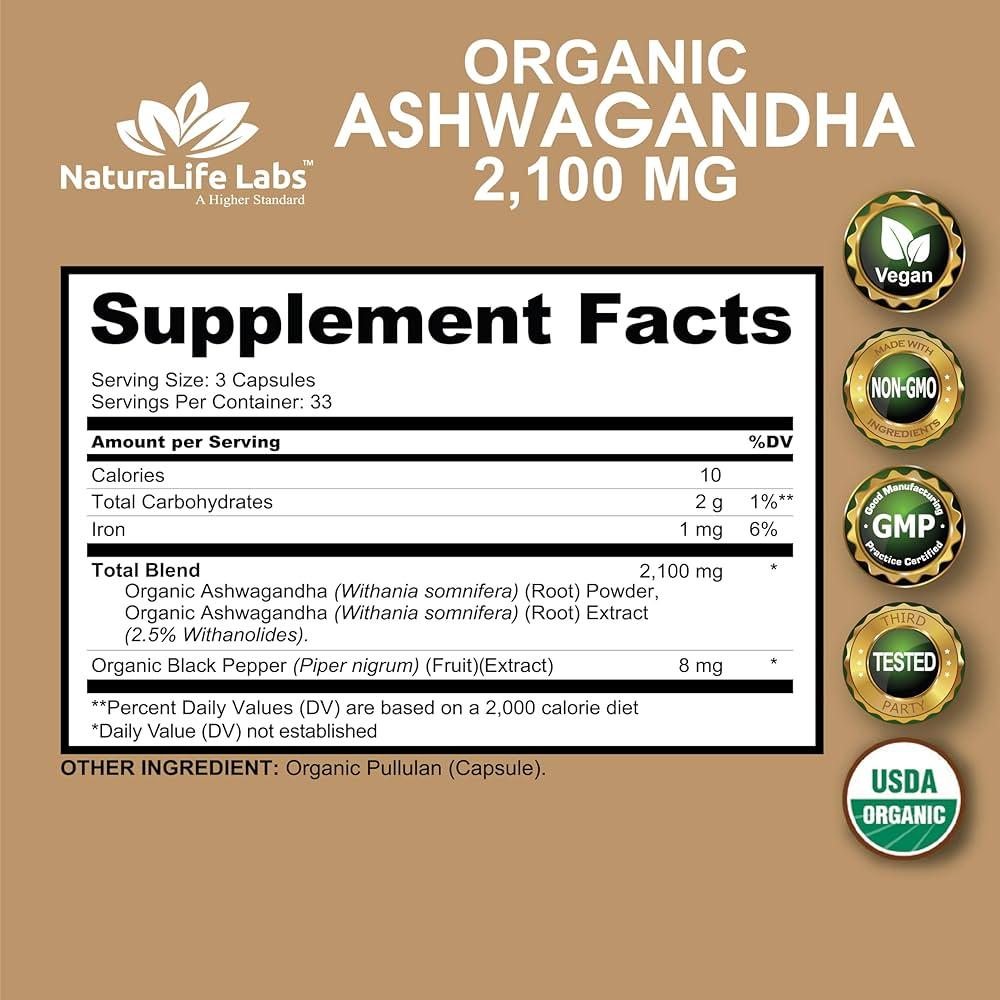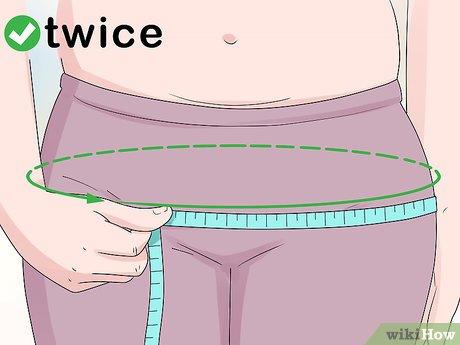Achieving a flatter lower belly is a common fitness goal that many strive for, yet it often proves challenging due to stubborn fat deposits and hormonal imbalances. Recent research and holistic health practices have highlighted the potential of ashwagandha, a powerful adaptogenic herb, in supporting weight management and reducing abdominal fat. This article delves into how incorporating ashwagandha into your daily routine, combined with targeted lifestyle changes, can help you drop up to 3 centimeters from your lower belly in just 3 months. Backed by scientific insights and practical guidance, we provide an authoritative roadmap to harnessing the benefits of ashwagandha for a slimmer, healthier midsection.
Table of Contents
- The science behind ashwagandha and its role in reducing lower belly fat
- Effective dosage and supplementation guidelines for optimal results
- Incorporating ashwagandha into a balanced diet and fitness routine
- Monitoring progress and measuring changes in lower belly circumference
- Potential side effects and precautions when using ashwagandha for fat loss
- Q&A
- To Conclude

The science behind ashwagandha and its role in reducing lower belly fat
Ashwagandha, an ancient adaptogenic herb used in Ayurvedic medicine, has recently garnered scientific attention for its potential in targeting stubborn lower belly fat. Central to its efficacy is the herb's ability to modulate the stress hormone cortisol, which is known to contribute to abdominal fat accumulation when chronically elevated. By lowering cortisol levels, ashwagandha helps prevent the body from storing excess fat in the lower abdomen, creating a biochemical environment conducive to fat loss.
Beyond hormonal regulation, ashwagandha enhances metabolic function by supporting thyroid health and improving insulin sensitivity. These effects promote better blood sugar regulation and reduce fat storage signals. Additionally, the herb's anti-inflammatory properties combat systemic inflammation, which is often linked to obesity and metabolic disorders. Together, these mechanisms create a multifaceted approach that not only aids in fat reduction but also supports overall metabolic wellness.
To visualize its impact, the table below summarizes the primary biological functions of ashwagandha related to fat loss:
| Biological Function | Effect on Lower Belly Fat |
|---|---|
| Stress Hormone Regulation | Reduces cortisol, limiting abdominal fat storage |
| Metabolic Enhancement | Improves insulin sensitivity and thyroid activity |
| Anti-inflammatory Action | Decreases systemic inflammation associated with obesity |
Consistent supplementation combined with a balanced diet and physical activity maximizes ashwagandha's benefits for lower belly fat reduction.

Effective dosage and supplementation guidelines for optimal results
To harness the full potential of ashwagandha for reducing lower belly fat, adhere to a daily dosage of 300-600 mg of standardized root extract. This range has been clinically validated to enhance cortisol regulation, reduce stress-induced fat accumulation, and support metabolism. It's crucial to start at the lower end if you're new to the supplement, gradually increasing after assessing your body's response to avoid any mild side effects such as digestive discomfort.
Consistency is key in supplementation. For optimal results, take ashwagandha with meals to improve absorption and minimize stomach upset. It pairs exceptionally well with a balanced diet and regular exercise routine, amplifying the fat-loss effects. Ideally, incorporate ashwagandha supplementation into both your morning and evening regimen to maintain steady hormone balance throughout the day and night.
| Supplementation Timing | Dosage | Recommended Use |
|---|---|---|
| Morning (with breakfast) | 150-300 mg | Boost energy & reduce morning cortisol spike |
| Evening (with dinner) | 150-300 mg | Enhance relaxation & improve sleep quality |
- Consult a healthcare provider before starting, especially if pregnant, nursing, or on medication.
- Combine ashwagandha with lifestyle changes such as mindful eating and targeted core exercises for the best outcome.
- Stay hydrated and monitor progress over the 3-month period to adjust dosage if necessary.

Incorporating ashwagandha into a balanced diet and fitness routine
Boost your daily nutrition by integrating ashwagandha in ways that complement a wholesome diet. Whether in powdered form, capsules, or as a tea, consistency is key. Aim to take ashwagandha with meals rich in protein and fiber, which help stabilize blood sugar levels and support metabolic health-crucial factors in reducing stubborn belly fat.
Combine supplementation with targeted exercise to maximize results. Ashwagandha is known for its ability to reduce cortisol levels, a hormone linked to abdominal fat storage. To capitalize on this, incorporate high-intensity interval training (HIIT) and core strengthening exercises into your routine. This fusion encourages fat loss while preserving lean muscle, enhancing your overall physique.
Here's a simple weekly plan to seamlessly weave ashwagandha into your fitness and meal schedule:
| Day | Meal Timing | Physical Activity | Ashwagandha Intake |
|---|---|---|---|
| Monday | Morning (with breakfast) | 30 min HIIT | 500 mg capsule |
| Wednesday | Evening (with dinner) | Core & strength training | 1 tsp powder mixed in smoothie |
| Friday | Morning (with breakfast) | Yoga & stretching | 500 mg capsule |
| Sunday | Evening (after workout) | Active rest (light walk) | Ashwagandha tea |
Maintain hydration and sufficient sleep to support ashwagandha's efficacy in stress management and metabolic regulation. This holistic approach can significantly enhance your journey to a flatter lower belly.

Monitoring progress and measuring changes in lower belly circumference
Tracking your progress with consistent, objective measurements is key to understanding how effective your ashwagandha regimen and lifestyle changes are for reducing lower belly circumference. Use a flexible measuring tape and take measurements at the same time of day-preferably in the morning before eating-to minimize natural fluctuations caused by digestion or water retention. Record the circumference right at the belly button or the point where your lower belly protrudes the most, ensuring you apply the tape snugly but without compressing the skin.
Beyond simple tape measurements, visually documenting your journey can provide additional motivation and clarity. Take front and side photos every two weeks in similar lighting and clothing conditions. This will help you observe gradual but meaningful changes that the tape measure alone might miss. If you prefer data-driven insights, consider combining measurements with basic body composition monitoring such as bioelectrical impedance scales or waist-to-hip ratios.
Establish a simple, repeatable system to log your findings. Here's an example table to organize weekly data:
| Week | Lower Belly Circumference (cm) | Notes (e.g., diet, exercise) |
|---|---|---|
| 1 | 85.0 | Started ashwagandha + cardio |
| 2 | 84.7 | Increased water intake |
| 3 | 84.3 | Added core strengthening |
Consistent measurement, photographic tracking, and detailed journaling will empower you to see how ashwagandha supports your goals and allow you to tweak your routine for maximum results.

Potential side effects and precautions when using ashwagandha for fat loss
While ashwagandha is widely regarded as a natural and generally safe supplement, it is crucial to be aware of potential side effects, especially when used for fat loss. Some individuals may experience mild gastrointestinal discomfort such as nausea, diarrhea, or an upset stomach. These symptoms often appear during the initial phase of supplementation and tend to subside as the body adjusts. Additionally, because ashwagandha can influence hormone levels, it may cause changes in thyroid function, so individuals with thyroid disorders should exercise caution and consult a healthcare provider before starting.
Precaution is essential when integrating ashwagandha into your routine. It can interact with medications, particularly those for blood pressure, diabetes, and immunosuppressants, potentially amplifying or diminishing their effects. Pregnant or breastfeeding women should avoid using ashwagandha due to insufficient research on its safety in these populations. Furthermore, those with autoimmune conditions or allergies related to nightshades should seek medical advice to prevent adverse reactions.
| Precaution | Advice |
|---|---|
| Thyroid Disorders | Consult a doctor before use |
| Medication Interactions | Review all medications with healthcare provider |
| Pregnancy & Breastfeeding | Avoid usage |
| Allergies | Check for nightshade sensitivity |
Q&A
Q&A: How to Flatten Your Lower Belly – Drop 3cm in 3 Months Using Ashwagandha
Q1: What is ashwagandha and how can it help flatten the lower belly?
Ashwagandha (Withania somnifera) is an adaptogenic herb traditionally used in Ayurvedic medicine. It helps reduce stress and cortisol levels, hormones linked to abdominal fat accumulation. By managing stress and improving hormonal balance, ashwagandha supports fat reduction, especially in the lower belly area.
Q2: Is it scientifically proven that ashwagandha can help reduce belly fat?
While more large-scale studies are needed, research indicates ashwagandha's ability to lower cortisol and enhance metabolism contributes to fat loss. Cortisol excess is a known factor in promoting visceral fat storage around the abdomen, so by modulating cortisol, ashwagandha indirectly aids in reducing belly fat.
Q3: How much ashwagandha should I take to see results?
Clinical trials commonly use doses ranging from 300 mg to 600 mg of standardized ashwagandha extract daily. For belly fat reduction, a typical regimen is 300 mg twice daily with meals. Always choose a standardized extract and consult your healthcare provider before starting supplementation.
Q4: What lifestyle factors should accompany ashwagandha use for best results?
To drop 3cm from your lower belly in 3 months, combine ashwagandha with:
- A balanced, calorie-controlled diet rich in whole foods
- Regular physical activity, including cardio and core-strengthening exercises
- Adequate sleep of 7-8 hours per night
- Stress management techniques such as meditation or yoga
Ashwagandha works best as part of a comprehensive lifestyle approach.
Q5: Are there any side effects or precautions when taking ashwagandha?
Ashwagandha is generally safe for most adults but may cause mild side effects like digestive upset or drowsiness in some individuals. Avoid if you are pregnant, breastfeeding, or have autoimmune conditions unless guided by a healthcare professional. Interactions with medications, especially sedatives or thyroid drugs, are possible.
Q6: How quickly can I expect to see a reduction in lower belly fat using ashwagandha?
Visible changes typically take several weeks to months. A realistic goal is approximately 3 cm reduction in waist circumference over 3 months when combined with proper diet and exercise. Consistency is key to achieving sustainable results.
Q7: Can ashwagandha replace diet and exercise in reducing belly fat?
No. Ashwagandha should be viewed as a supportive supplement rather than a replacement for healthy lifestyle habits. Effective belly fat reduction requires a combination of nutrition, physical activity, stress management, and potentially supplementation for best outcomes.
This Q&A provides an evidence-based overview on how ashwagandha can be integrated into a strategy to flatten the lower belly and lose around 3 cm of waist circumference in 3 months.
To Conclude
Incorporating ashwagandha into your daily routine can be a game-changer for flattening your lower belly and achieving measurable results, such as dropping 3cm in just 3 months. Its unique ability to reduce stress, balance hormones, and support metabolism makes it an essential ally in your fat-burning journey. To maximize these benefits, pairing ashwagandha with a high-quality supplement like Sumatra Slim Belly Tonic is highly recommended. This potent formula is specifically designed to target stubborn belly fat, enhance your body's natural fat-burning processes, and promote a leaner, healthier midsection. By committing to consistent use and combining it with proper nutrition and exercise, you can confidently take control of your lower belly fat and enjoy lasting results.








